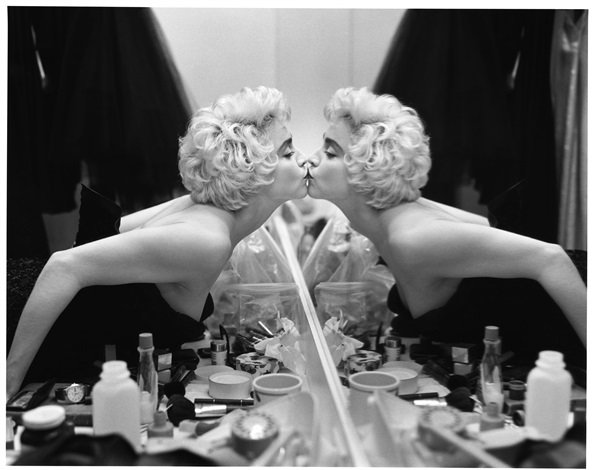The 1980s in Fashion Photography: From Power Aesthetics to Postmodern Grit
The 1980s was a decade of contrasts, defined by economic boom, consumer culture, and the rise of celebrity influence, but also by political upheaval, subcultural movements, and a new spirit of artistic rebellion. Fashion became a powerful symbol of ambition and self-expression: from the boardroom power suit to the street-born punk aesthetic, style mirrored society’s shifting values.
Within this landscape, fashion photography emerged as both mirror and critique—capturing the glossy ideals of luxury while also questioning them through raw, unvarnished imagery. The industry was shaped by supermodels, global fashion houses, and magazines like Vogue and Harper’s Bazaar, which became cultural arbiters. Simultaneously, underground scenes in New York, London, and Berlin injected a sense of authenticity and grit that pushed the medium beyond its commercial roots.
The 1980s marked a transformative decade in fashion photography, blending technological innovation with bold new aesthetics that challenged traditional notions of beauty, self-expression, and the way we perceive fashion. As film photography evolved and creative boundaries were pushed, the era gave rise to some of the most iconic fashion images and photographers in visual history.
Though digital photography was still in its infancy during the 1980s, significant innovations in film technology, lighting equipment, and lenses allowed photographers to explore more dynamic styles. These advances resulted in more vibrant colors, sharper contrasts, and increasingly experimental compositions. Coupled with the cultural energy of the decade, these technical strides helped forge the unmistakable visual identity of 1980s fashion photography—glamorous, provocative, and unapologetically bold.
The Rise of the "Power Look" in Fashion Photography
One of the decade’s most defining trends was the emergence of the “Power Look”—a new style of fashion photography characterized by bold silhouettes, strong lines, vivid colors and a commanding presence. It reflected the era’s cultural embrace of ambition, confidence, and glamour.
Photographers like Patrick Demarchelier and Bruce Weber were key figures in shaping this aesthetic. Demarchelier’s elegant, clean compositions elevated editorial fashion, while Weber’s work introduced sensuality and emotional intimacy to commercial campaigns. His black-and-white portraits of celebrities and models helped blur the lines between fashion and fine art.
“I don’t really work for a lot of magazines, because a lot of them don’t want my kind of pictures. It’s too risky for them,” Weber once remarked—underscoring how provocative imagery pushed against mainstream limits.
CHRISTY TURLINGTON, 1987 | PATRICK DEMARCHELIER
MADONNA, Life Magazine, 1986 | BRUCE WEBER
A FRESH LOOK: The Raw Aesthetic and the Postmodern Turn
In parallel with the glossy Power Look, the late 1980s witnessed the rise of a fresher, more unfiltered and unpolished approach to fashion photography. Influenced by postmodernism (a cultural and intellectual movement that rejected the idea of a single, objective truth and embraced a more fragmented and subjective approach to art and culture), this new style questioned dominant narratives around beauty, truth, and representation. It emphasized subjectivity, imperfection, and emotional depth—often through raw, snapshot-like images.
Photographers like Juergen Teller, Corinne Day, and Wolfgang Tillmans became known for their unretouched, intimate portraits that captured models in natural light, in everyday settings. Their work would go on to shape the grunge-influenced aesthetics of the 1990s.
At the forefront of this postmodern shift was Cindy Sherman, one of the most emblematic photographers of the 80s. Her haunting self-portraits—often disguised as fictional characters—explored the themes of gender and identity. They revolutionized the way fashion was represented, showing that beauty is not limited to the classic canons:
UNTITLED (FOR CHICAGO), 1986 | CINDY SHERMAN
Another key figure, Nan Goldin, created deeply personal and emotional photographic diaries documenting the lives of her friends, lovers, and LGBTQ+ community in New York. Her images were not styled editorials, but raw authentic expressions of love, trauma, and identity, which had a profound influence on fashion’s visual language.
Robert Farber, on the other hand, also made his mark on fashion photography in the 1980s. Known for his sensual and artistic nude studies, the female figure is often central to his work, like this black-and-white photograph Back (1982) beautifully capturing a fragment of the female form:
Thus, the 1980s was a time of creativity and change in fashion photography. New technologies allowed photographers to experiment with new styles and techniques, leading to the creation of iconic images. The Power Look and Fresh Look movements pushed the boundaries of beauty and representation, while Postmodernism allowed photographers to explore new horizons by challenging traditional conventions.
The photographers of the 1980s helped lay the groundwork for the diversity and experimentation seen in today’s fashion imagery.
Read also:
1950–1959 The Golden Age of Fashion Photography
The 1960s in Fashion Photography: A Revolutionary Decade
Photography in the 1970s: New Movements & Artistics Experimentation
The 1990s: The Golden Age of Fashion Photography & Supermodels
Capturing a New Era: Trends that defined Fashion Photography in the 2000s




